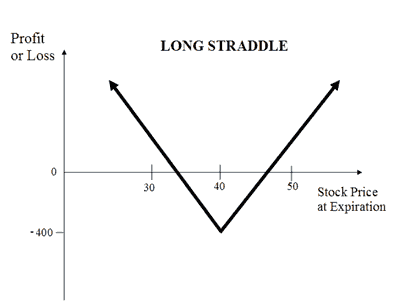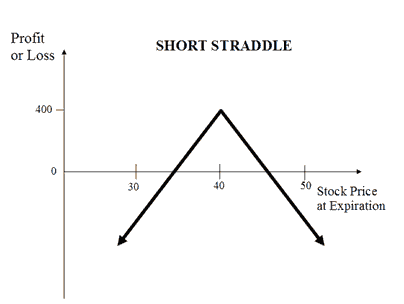 Zerodha (Trading Account)
Zerodha (Trading Account)
FREE Equity Delivery and MF
Flat ₹20/trade Intra-day/F&O
 Zerodha (Trading Account)
Zerodha (Trading Account)
FREE Equity Delivery and MF
Flat ₹20/trade Intra-day/F&O

|
|
Compare Long Straddle (Buy Straddle) and Short Straddle (Sell Straddle or Naked Straddle) options trading strategies. Find similarities and differences between Long Straddle (Buy Straddle) and Short Straddle (Sell Straddle or Naked Straddle) strategies. Find the best options trading strategy for your trading needs.
| Long Straddle (Buy Straddle) | Short Straddle (Sell Straddle or Naked Straddle) | |
|---|---|---|
 |
 |
|
| About Strategy | The Long Straddle (or Buy Straddle) is a neutral strategy. This strategy involves simultaneously buying a call and a put option of the same underlying asset, same strike price and same expire date. A Long Straddle strategy is used in case of highly volatile market scenarios wherein you expect a big movement in the price of the underlying but are not sure of the direction. Such scenarios arise when company declare results, budget, war-like situation etc. This is an unlimited profit and limited risk strategy. The profit earns in this strategy is unlimited. Higher volatility results in higher profits. The maximum loss is limited to the net premium paid. The max loss occurs when underlying asset price on expire remains at the strike price. ... Read More | The Short Straddle (or Sell Straddle or naked Straddle) is a neutral options strategy. This strategy involves simultaneously selling a call and a put option of the same underlying asset, same strike price and same expire date. A Short Straddle strategy is used in case of little volatility market scenarios wherein you expect none or very little movement in the price of the underlying. Such scenarios arise when there is no major news expected until expire. This is a limited profit and unlimited loss strategy. The maximum profit earned when, on expire date, the underlying asset is trading at the strike price at which the options are sold. The maximum loss is unlimited and occurs when underlying asset price moves sharply in upward or down... Read More |
| Market View | Neutral | Neutral |
| Strategy Level | Beginners | Advance |
| Options Type | Call + Put | Call + Put |
| Number of Positions | 2 | 2 |
| Risk Profile | Limited | Unlimited |
| Reward Profile | Unlimited | Limited |
| Breakeven Point | 2 break-even points | 2 Breakeven Points |
| Long Straddle (Buy Straddle) | Short Straddle (Sell Straddle or Naked Straddle) | |
|---|---|---|
| When to use? | The strategy is perfect to use when there is market volatility expected due to results, elections, budget, policy change, war etc. |
This strategy is to be used when you expect a flat market in the coming days with very less movement in the prices of underlying asset. |
| Market View | Neutral When you are not sure on the direction the underlying would move but are expecting the rise in its volatility. |
Neutral When trader don't expect much movement in its price in near future. |
| Action |
|
|
| Breakeven Point | 2 break-even points A straddle has two break-even points. Lower Breakeven = Strike Price of Put - Net Premium Upper breakeven = Strike Price of Call + Net Premium |
2 Breakeven Points There are 2 break even points in this strategy. The upper break even is hit when the underlying price is equal to the total of strike price of short call and net premium paid. The lower break even is hit when the underlying price is equal to the difference between strike price of short Put and net premium paid. Break-even points: Lower Breakeven = Strike Price of Put - Net Premium Upper breakeven = Strike Price of Call+ Net Premium |
| Long Straddle (Buy Straddle) | Short Straddle (Sell Straddle or Naked Straddle) | |
|---|---|---|
| Risks | Limited The maximum loss for long straddle strategy is limited to the net premium paid. It happens the price of underlying is equal to strike price of options. Maximum Loss = Net Premium Paid |
Unlimited There is a possibility of unlimited loss in the short straddle strategy. The loss occurs when the price of the underlying significantly moves upwards and downwards. Loss = Price of Underlying - Strike Price of Short Call - Net Premium Received Or Loss= Strike Price of Short Put - Price of Underlying - Net Premium Received |
| Rewards | Unlimited There is unlimited profit opportunity in this strategy irrespective of the direction of the underlying. Profit occurs when the price of the underlying is greater than strike price of long Put or lesser than strike price of long Call. |
Limited Maximum profit is limited to the net premium received. The profit is achieved when the price of the underlying is equal to either strike price of short Call or Put. |
| Maximum Profit Scenario | Max profit is achieved when at one option is exercised. |
Both Option not exercised |
| Maximum Loss Scenario | When both options are not exercised. This happens when underlying asset price on expire remains at the strike price. |
One Option exercised |
| Long Straddle (Buy Straddle) | Short Straddle (Sell Straddle or Naked Straddle) | |
|---|---|---|
| Advantages | Earns you unlimited profit in a volatile market while minimizing the loss. |
It allows you to benefit from double time decay and earn profit in a less volatile scenario. |
| Disadvantage | The price change has to be bigger to make good profits. |
Unlimited losses if the price of the underlying move significantly in either direction. |
| Simillar Strategies | Long Strangle, Short Straddle | Short Strangle, Long Straddle |

Add a public comment...

FREE Intraday Trading (Eq, F&O)
Flat ₹20 Per Trade in F&O
|
|